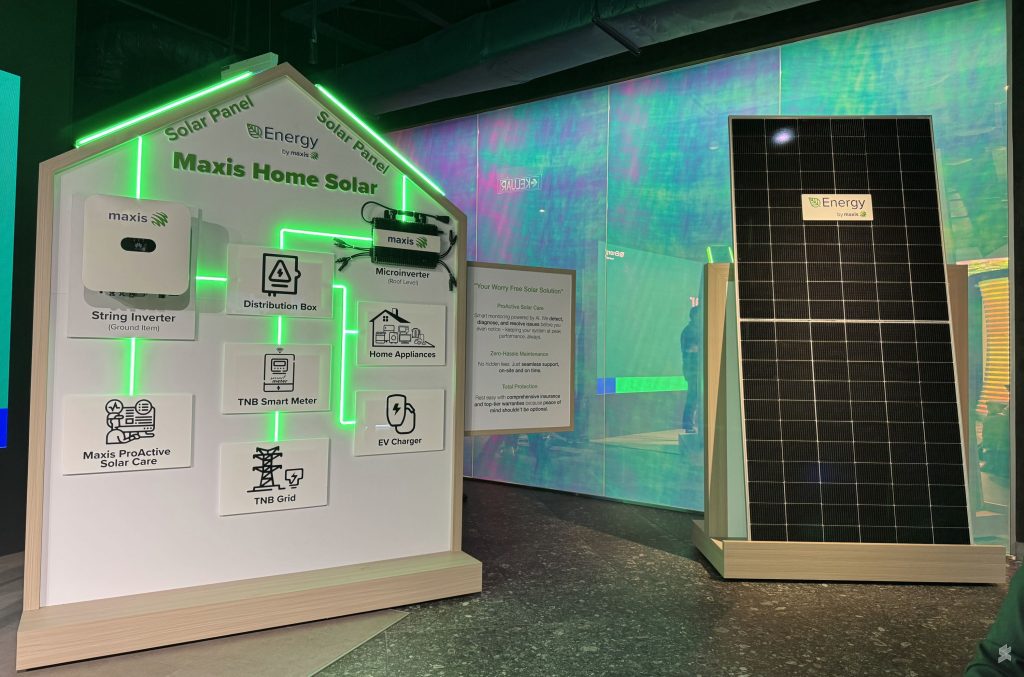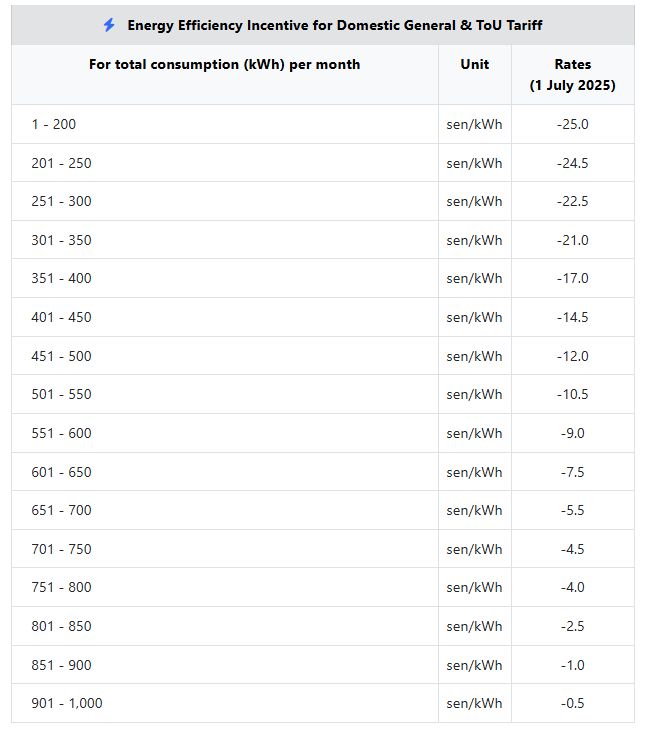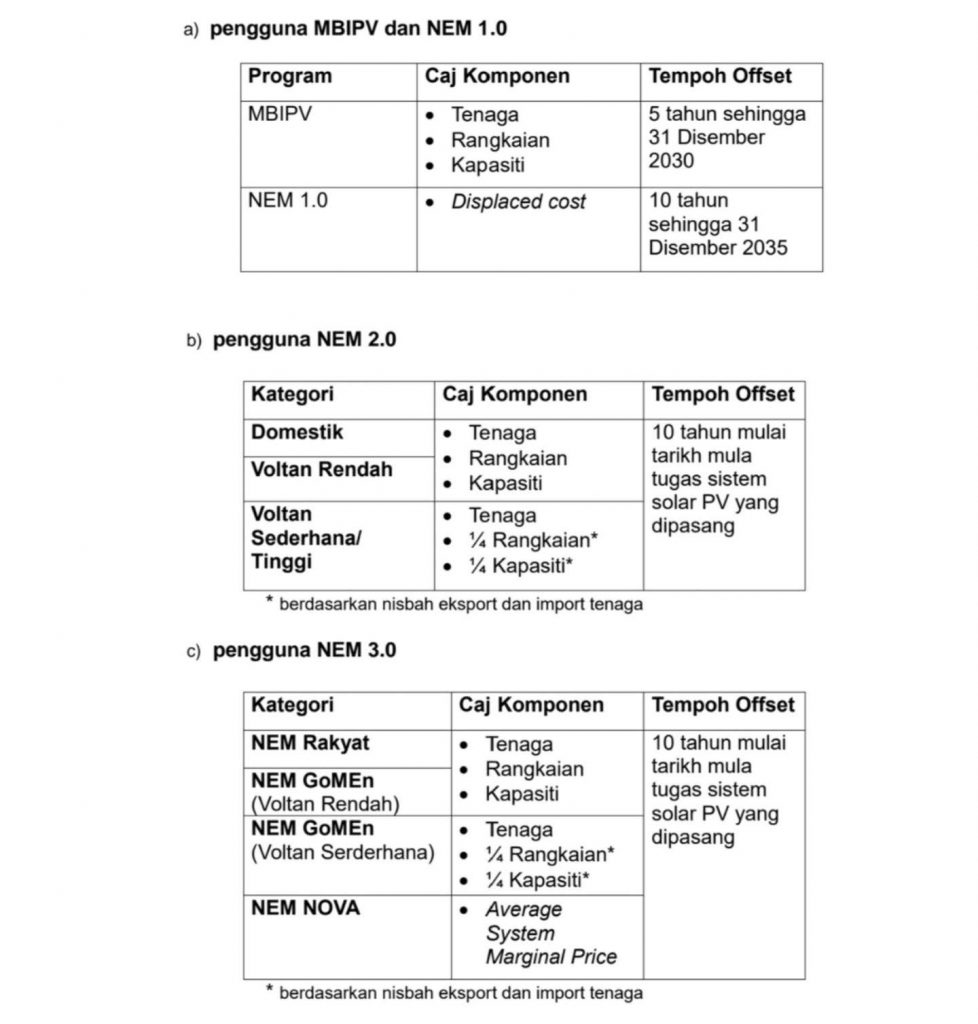Households with home solar systems can breathe a sigh of relief as the government continues to retain the existing offset for excess energy following the latest electricity tariff structure which takes effect today, 1st July 2025. This should be good news for 96,000 solar users in Malaysia.
Under the new tariff structure, the total electricity cost billed by Tenaga Nasional Berhad (TNB) will be broken down to four components which include Energy Charge, Capacity Charge, Network Charge and Retail Charge. Initially, there were concerns that the offset for excess solar energy would only cover Energy Charge, resulting in lower returns if Capacity and Network charge were excluded.
According to the Ministry of Energy Transition and Water Transformation (PETRA), they have decided that the current offset mechanism for excess energy as energy credit for existing MBIPV and NEM users will be retained.
As shown in the table below, the offset will include Energy, Capacity and Network charges for MBIPV, NEM 2.0 and NEM 3.0 for domestic home users. Meanwhile, for NEM 1.0 users, the offset is for displaced cost.
When it comes to duration, the offset period for MBIPV will cover a period of 5 years until 31st December 2030, while NEM 1.0 offset duration covers 10 years until 31st December 2035.
Meanwhile, the offset period for NEM 2.0 and NEM 3.0 will cover a period of 10 years since the date of solar PV installation.

The Ministry added that to ensure fairness in providing incentives to eligible MBIPV and NEM users to receive Energy Efficiency Incentives (EEI) or any related incentives, the rates and calculations will be adjusted according to ensure it is fairer for all electricity users.
The EEI is aimed at encouraging efficient use of electricity by providing rebates for monthly usage of 1,000kWh and below. The amount of rebate per kWh depends on your total monthly electricity usage.
For example, users who consume 200kWh and below will get 25 sen/kWh off, while users who consume 901 to 1000kWh per month will get lower rebate of 0.5 sen/kWh

In addition, to ensure a streamlined implementation of the offset mechanism for rooftop solar programmes under PETRA, the settlement period for all rooftop solar programmes is set at 12 months compared to its previous method of having different durations depending on the respective programme participated.
For existing users whose offset period has ended, they will be given the option to switch to any ongoing rooftop solar programmes such as Solar for Self-consumption Programme (SelCo) or the Community Renewable Energy Aggregation Mechanism (CREAM) programme. Alternatively, they can install energy storage systems, or participate in any future programmes that would be introduced by the government.
The NEM 3.0 programme has ended on 30th June 2025 and the implementation of rooftop solar systems will continue under SelCo which includes enhanced implementation in the form of abolishing installed capacity limits and configurations that were previously announced.
With the latest statement, PETRA hopes that the policy decision will provide clarity to all parties on the Government’s direction in implementing rooftop solar programmes to support Malaysia’s aspiration to achieve the 70% Renewable Energy goal for national electricity supply by 2050.
PETRA shared that there are currently over 82,000 operating solar PV systems with a capacity of 1.7GW. Meanwhile, the remaining 14,000 that’s still under development offer a capacity of 595MW.
[ SOURCE ]






